We disassemble the psychological aspect, the relevance of different colors in the children's room and give useful tips on choosing a shade.
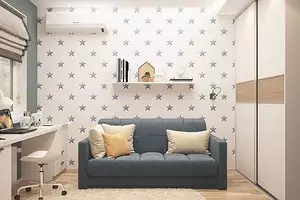
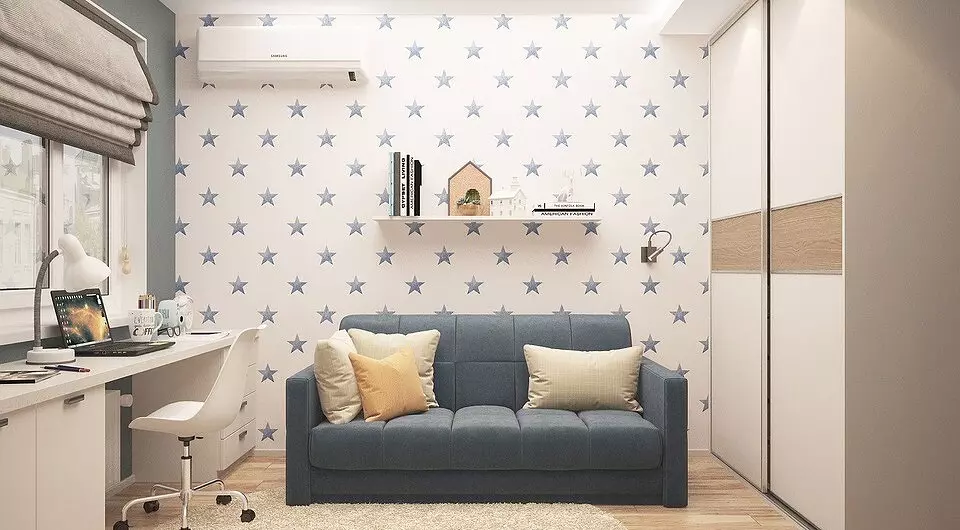
Making a children's interior, you need to take into account various aspects. What color in the nursery can affect the development of the baby and the formation of its character? How to help your child fight difficulties or, on the contrary, to distract against negative situations by choosing the right shade? Experiment with the design, not forgetting that the child's globility may not coincide with yours. Travelers for his mood and condition and proceed on the basis of this.
Choose color for children
Psychological factorCollapse of different colors
- White
- Grey
- Yellow
- Green
- Red
- Orange
- Pink
- Blue
Tips for choosing
Color psychology: myths and facts
Myth: Colors affect all the same
In books and in modern psychological influence allowances, even in the book on Feng Shui, the same principles of color influence on a man are given.How really?
Each color has its meaning only within a certain culture. For example, for Europeans, white symbolizes purity and innocence, and for a resident of China - death. In the Chinese tradition, the color of knowledge is blue, and in the European - yellow, it is he activates the brain activity. Colors affect not objectively, immediately to subconscious and physiology, but subjectively, through the cultural environment. And in practice, in practice, mixing information obtained from European psychological literature and postulates of Feng Shui, will have a special effect.
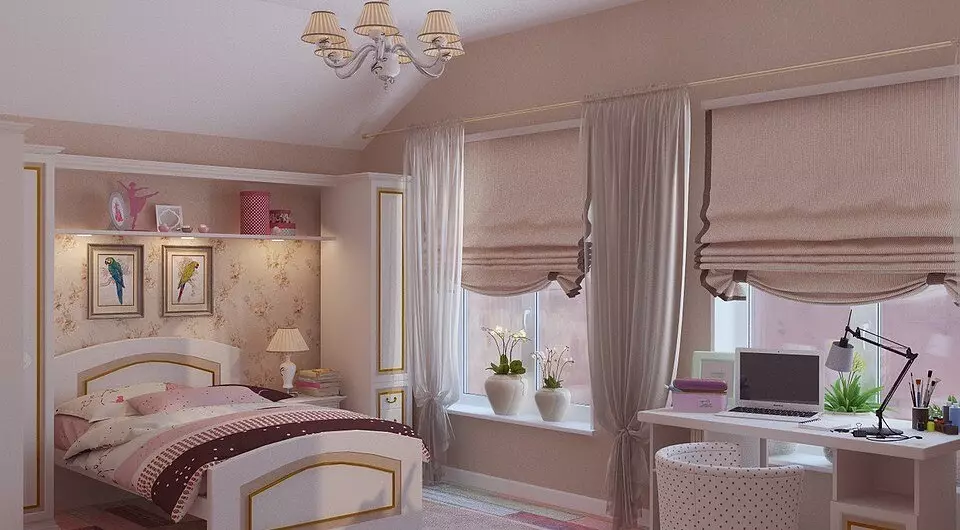
Myth: With the help of color you can get a child to learn
For example, child learns no matter and does not want to play sports. Wanting to help him, you change the color gamut of the interior on the red, stimulating activity. And wait for the result.How really?
From this approach it is better to refuse. Each person has a special temperament, a warehouse of character, and individually reacts to events and impacts. If the child is closed and inclined to twist in the clouds, red wallpapers and furniture will not make it an excellent student and a soul of the company. Yes, they will stimulate activity, but it most likely will remain internal. Moreover, the child will rather suppress her to keep his calm. Such an internal conflict may even lead to neurosis.
Children's choice
Children's White Colors
Many peoples are white - a symbol of good luck, good, life. White carries hope, energy and power conversion. It effectively tones, and also has a beneficial effect on closed and custodized children, their self-esteem increases. However, the dominant white can cause a feeling of inaccessibility and superiority over others, as well as the impression of excessive sterility of the room. It is better to use it in combination with other colors. White is perfect for children in Scandinavian style.
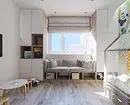

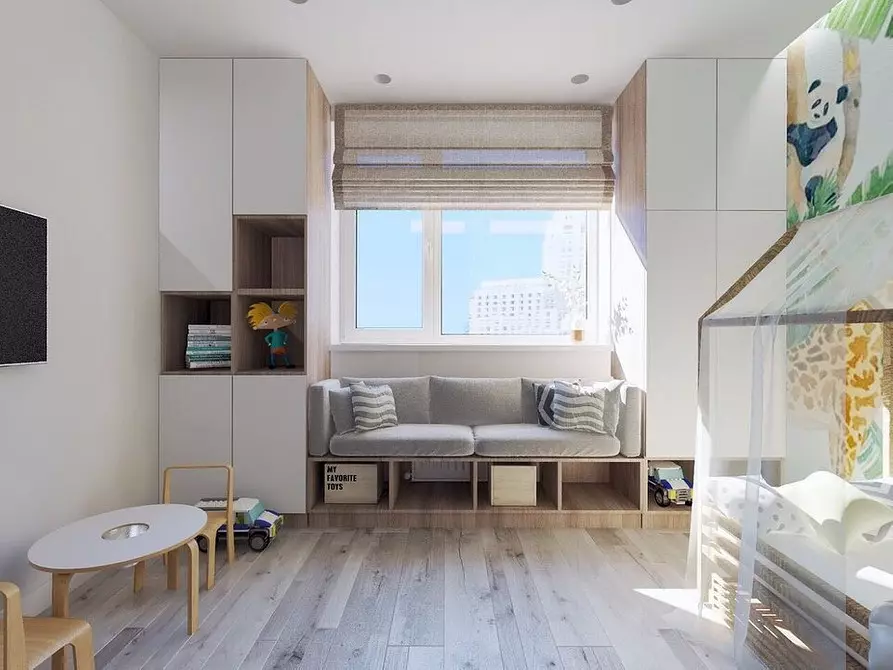
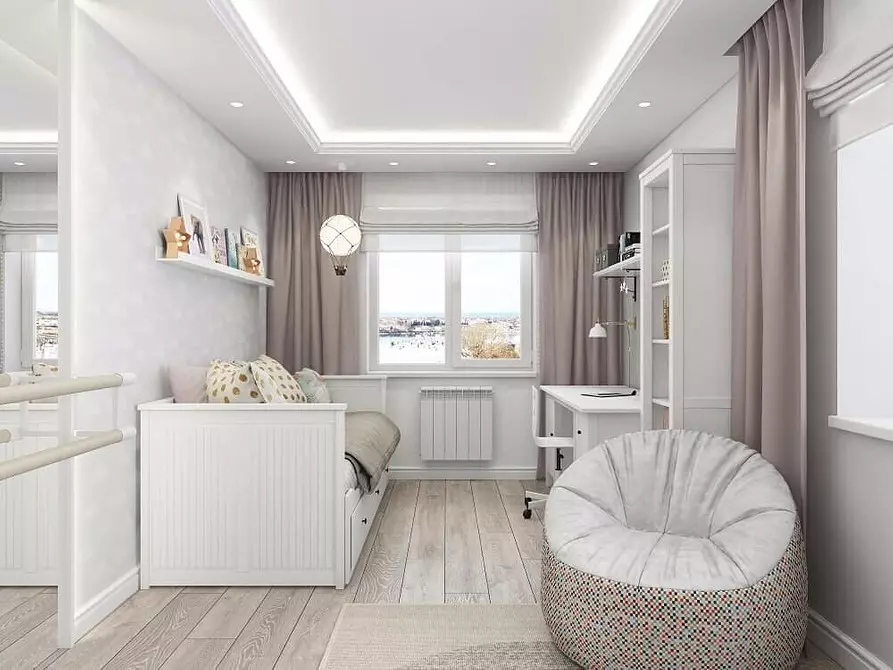
Grey
People preferring gray do not believe that with the help of emotions you can change something, do not believe in the sincerity of the experiences; It is believed that feelings should be shown only in certain circumstances (but not now). From here their constant stiffness, restraint and, therefore, emotional exhaustion. Gray color stabilizes the surrounding situation, but it is dual. On the one hand, has a negative meaning: a man in a gray room feels isolated, separated from others. On the other hand, in its positive meaning, gray corresponds to stability and confidence that all the best is ahead. With this duality, the features of the impact on a person of various shades are connected.
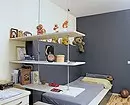
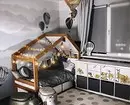
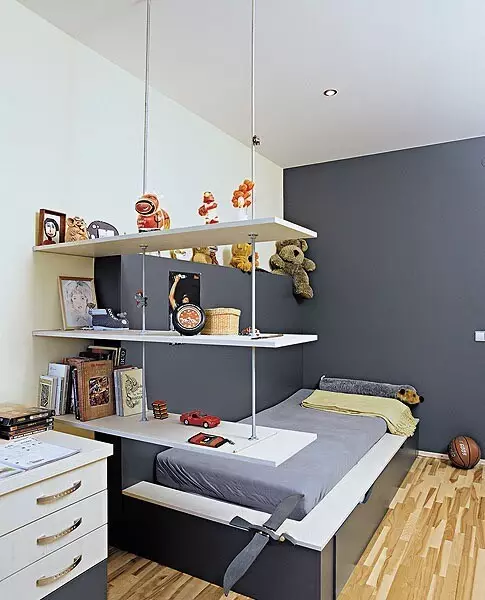
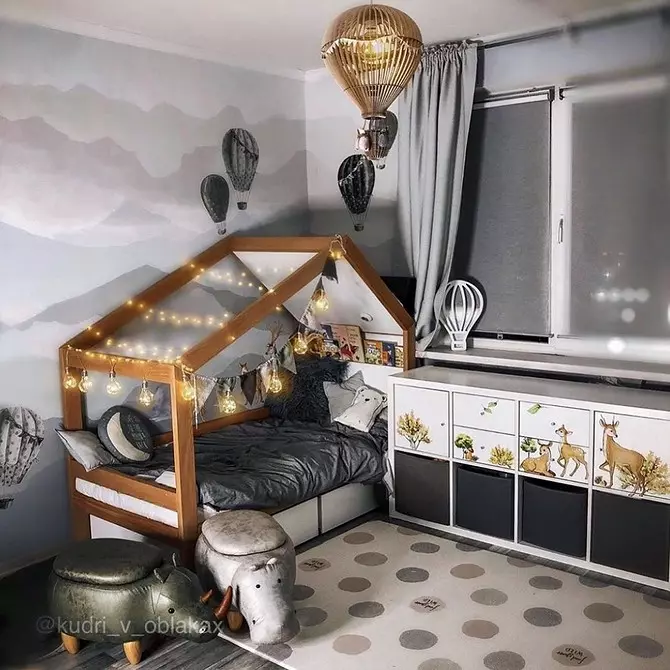
Light gray soothes. Moreover, it causes a slight feeling of peace, freedom, causes a good psycho-energy state. And dark gray, on the contrary, reflects an unfortunate alarm, deprived of internal energy, he presses. Any shade of gray does not encourage active actions. And the dark gray room for healthy children is not suitable, as this is the color of the disease, passivity, boredom.
Yellow
Yellow color personifies the mind - it is believed that it affects intellectual development, stimulates the expansion of cognitive interests. It helps to overcome difficulties, contributes to the concentration of attention. Under the influence of a yellow person quickly makes decisions.
Yellow stimulates the development of intuition and intelligence. His presence in the children's positively affects absolutely all aspects of the child's life: activates the brain activity, the mood raises, increases the speed of perception, visual sharpness. Yellow contraindicated only in cases if the child is too excited.
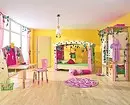
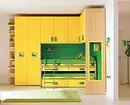
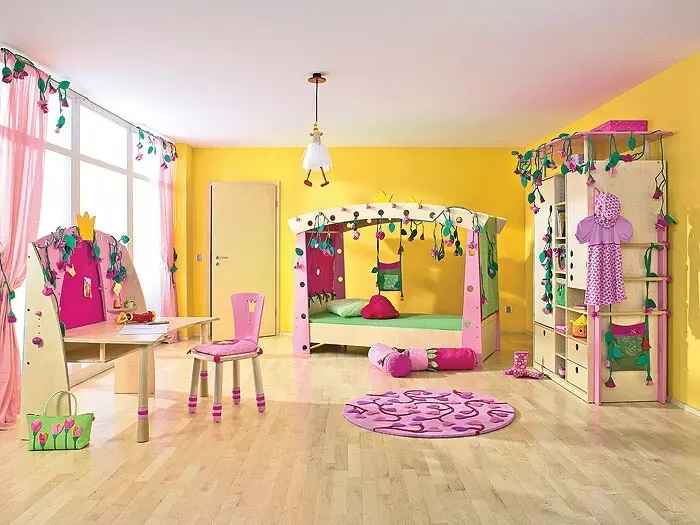
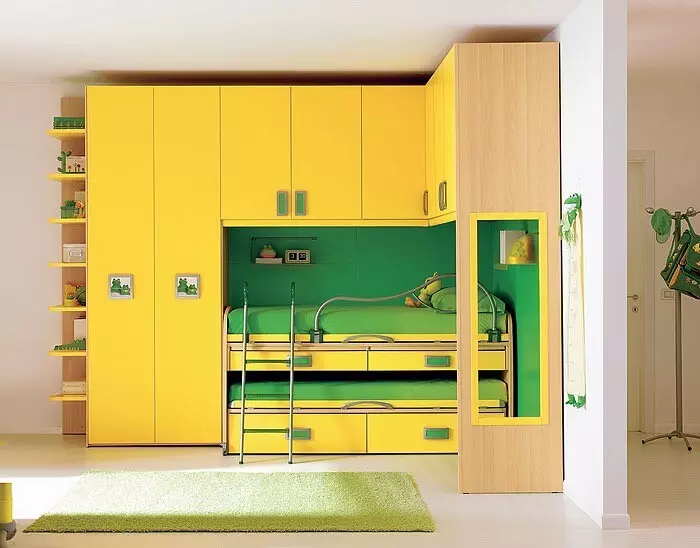
Green
Green room - Relaxation room. He contributes to the self-analysis, stimulates the desire of a person to understand himself, nothing requires and does not call anywhere. The man under the influence of green becomes more attentive - that is why in the past the writing tables were tightened with green cloth, and the table lamps had green lampshades. In addition, the domination of the green gamma contributes to a good mood, helps to fight insomnia. Drawings, toys and binding books, Children's green furniture - what is needed by a child.
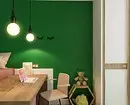
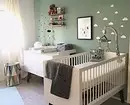
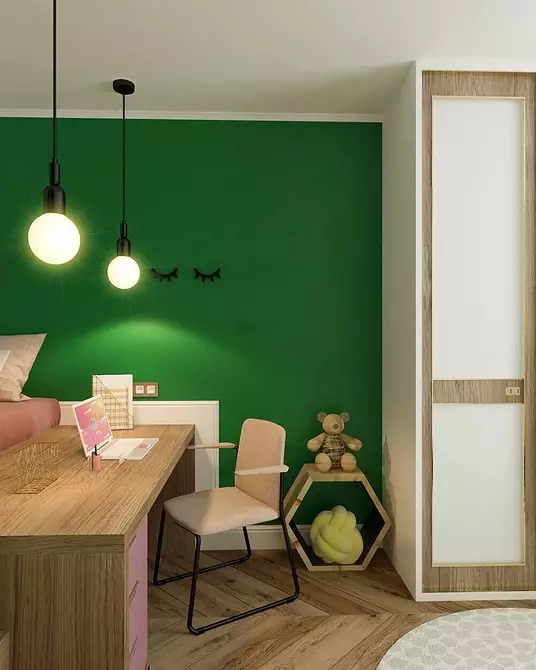
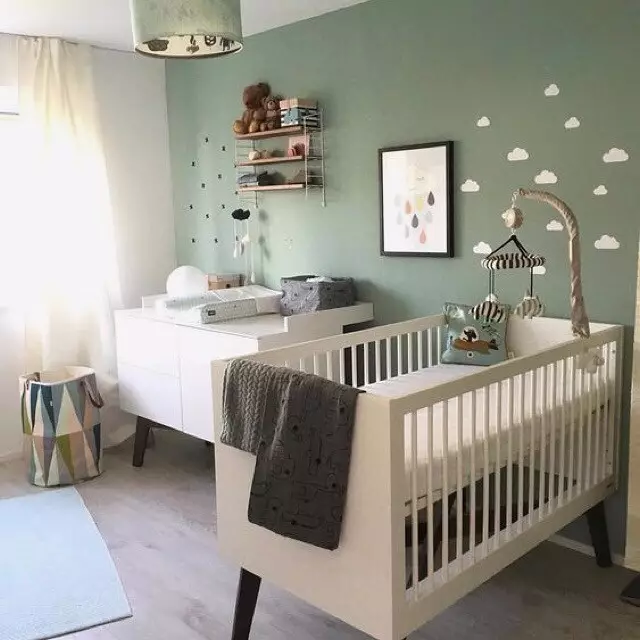
Red
Red - energy source, it personifies power, breakthrough, will to victory. Red and burgundy color actively act on the nervous system, increase blood pressure. Hypotone and apathetic, low-effective children feel better in the interior with bright red accents. The red color of the walls in the nursery is exactly extra, it is better to add it accently. With prolonged exposure, this color negatively affects the children's psyche, so the interior with the predominance of red can cause headaches and nightmares. Children living in such a room often quarrel.
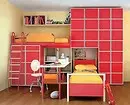
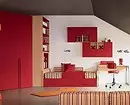
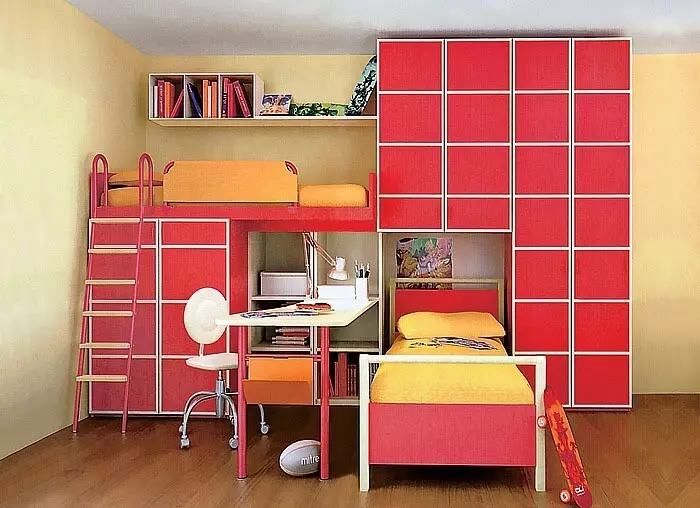
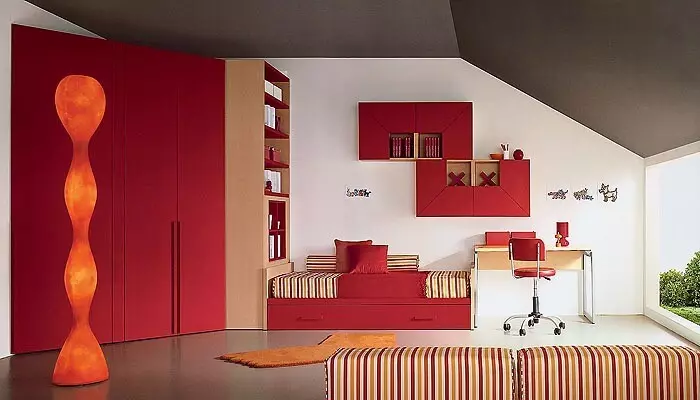
Orange
Warm, joyful and energetic color has all the advantages of red, but does not carry aggression, it acts rather gently. He constantly holds in a tone, is associated with self-affirmation, desire to achieve the goal. It is almost always affected by the beneficial, as it improves the mood, bringing thoughts on the positive sides of life (unlike blue). Orange helps a person feel more liberated and free, sets up optimism and openness in communication. As they say researchers of the children's psyche, orange love all the kids. It contributes to digestion, strengthens appetite, but busting with this color in the interior can cause an overwork in a child, and sometimes even dizziness. Therefore, it is best if only a few details are in the children's orange. Orange has an activating effect on closed children, helps to free themselves from fears. It stimulates the development of creative abilities.

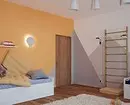
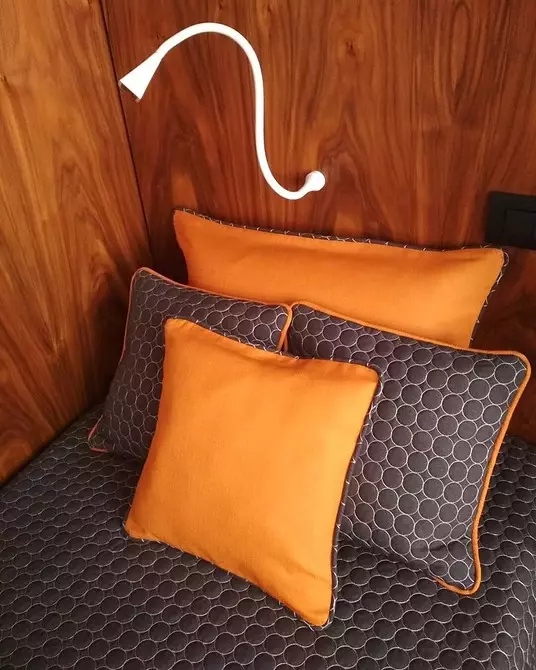
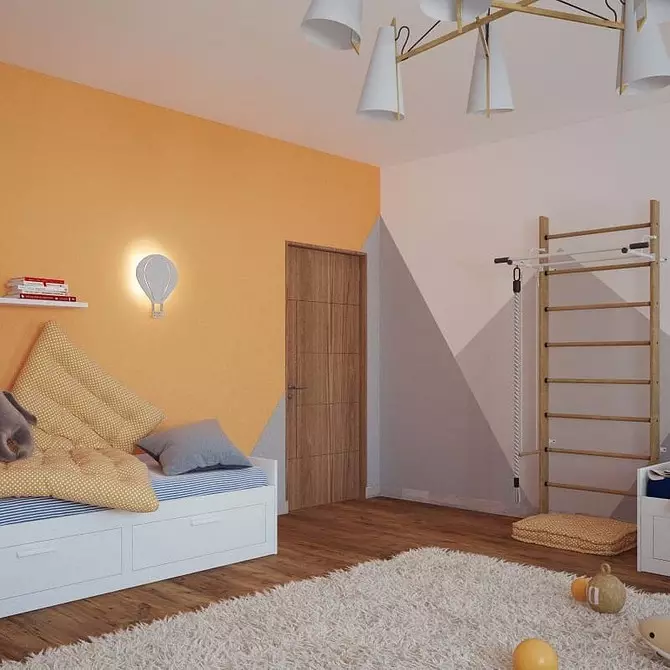
Pink color children
The heat of this color dissolves the negative. The prevailing pink testifies to the need of a person in defense, about his removal from real life, the care of the world of dreams, fairy tales and elevated thoughts. Excessive passion for pink says that the teenager considers himself too thin, emotional, aristocratic nature, which is difficult to fit into the surrounding coarse world. If you want to raise your child with a leader, powerful and tough, such a color for his room will not suit.
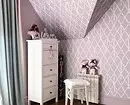
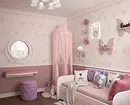
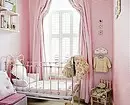
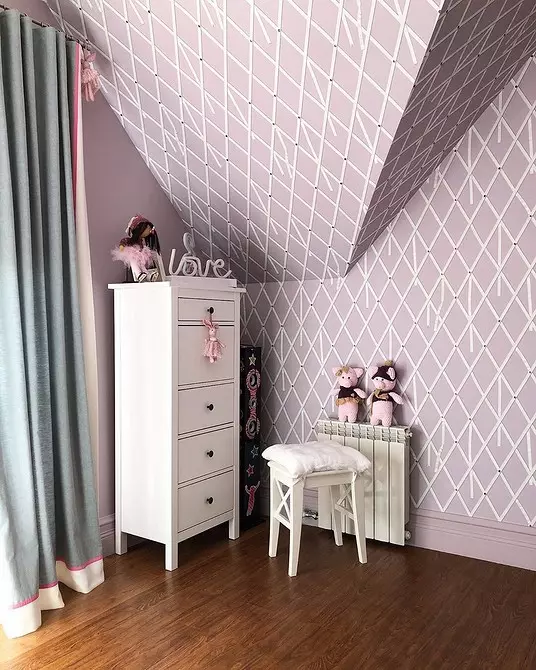
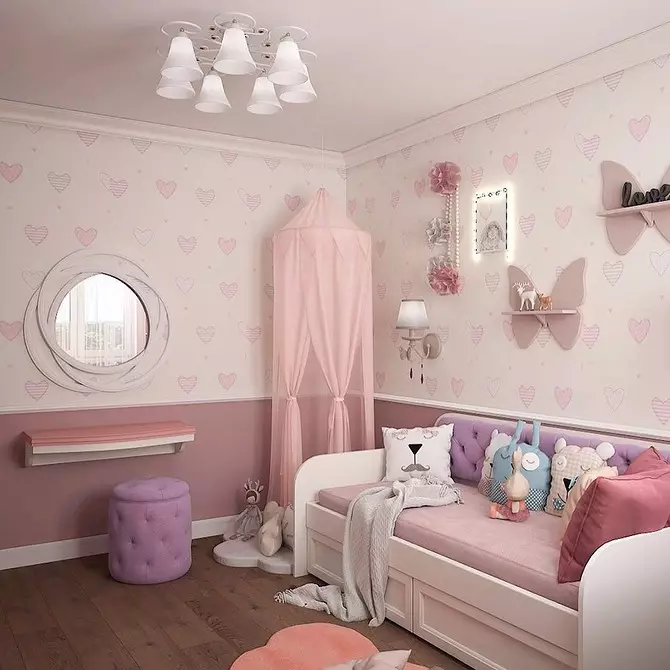
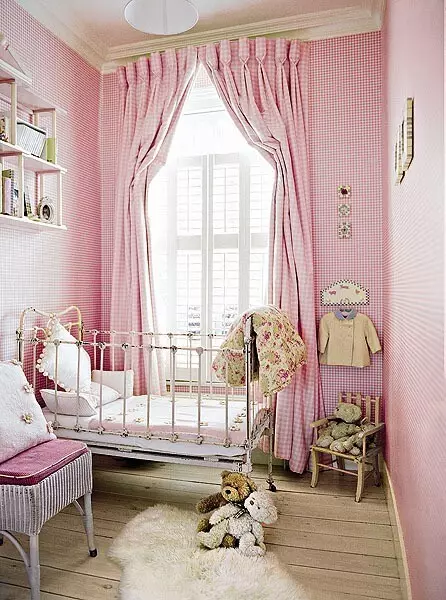
Blue
Blue inhibits the nervous system, causes a weakening of the pulse, removes muscle tension and dults pain. Sometimes under his influence comes fatigue and depression. In the children's blue may be present only very limited: for example, pajamas, a baby bathrobe, border on a blanket.
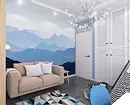
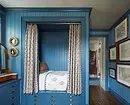
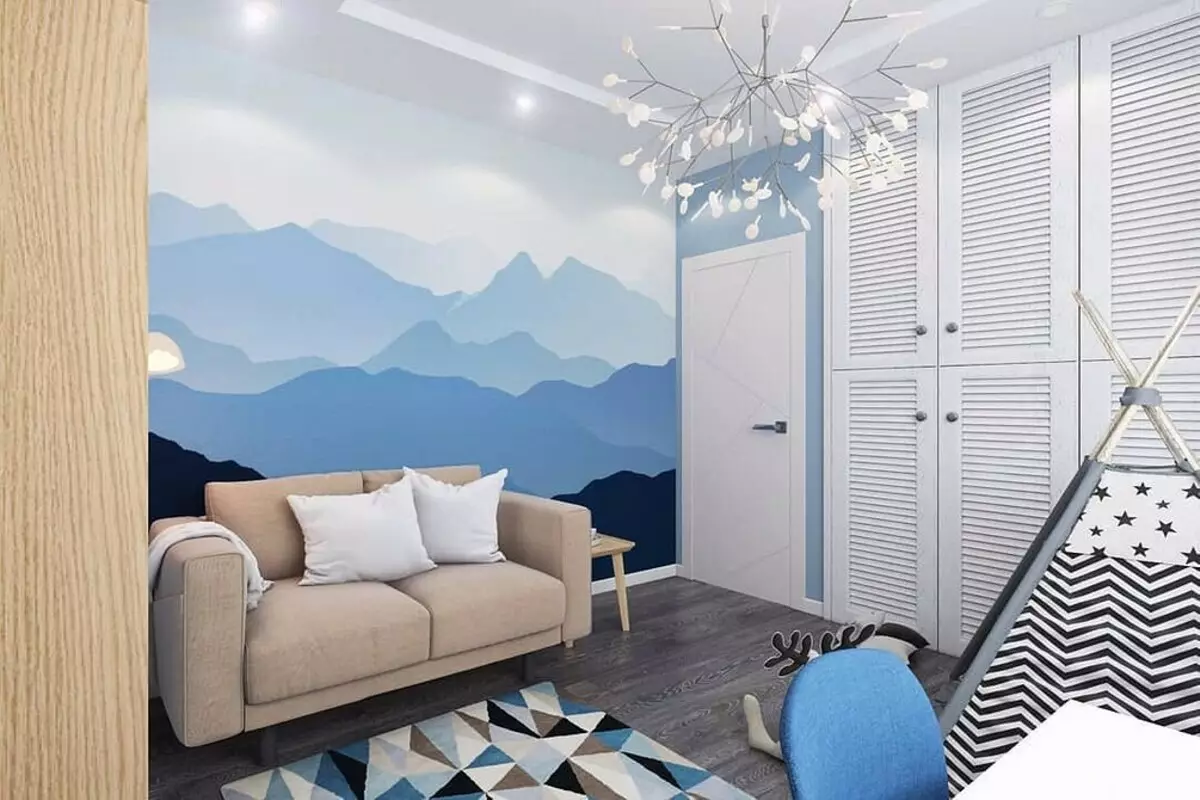
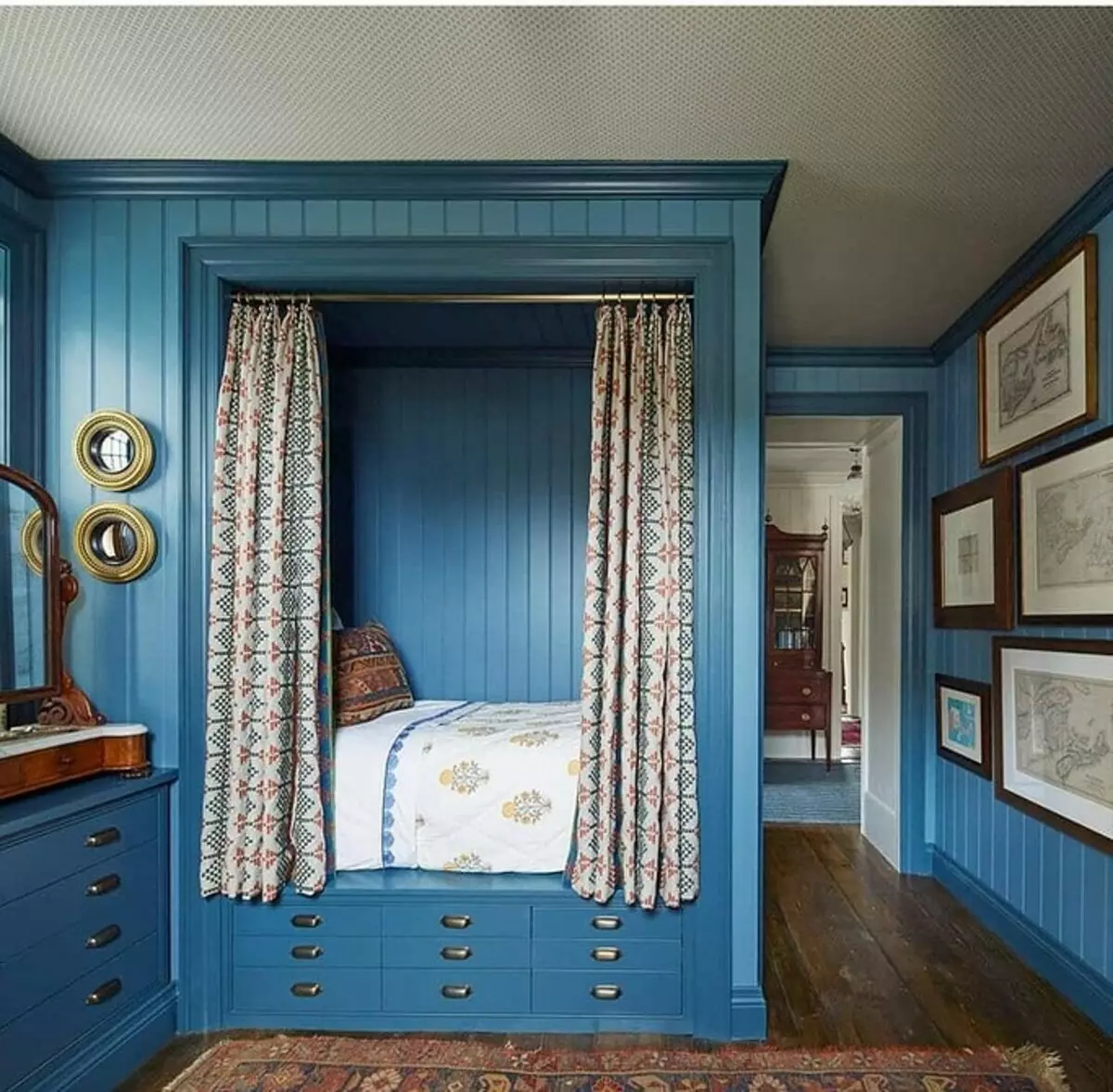
Color selection tips for children's interior
1. It is better to choose a light gamut
In the design of a children's avoiding dark spectral transitions, because the colors that are smoothly moving into black, inhibitively and aggressively act on the children's psyche. The bright tones, on the contrary, will rather fill the room with a cheerful atmosphere, very useful for the development of the child. An excellent solution is to use the shades of ivory with golden splashes and blue, as if the sky, tones for the walls.
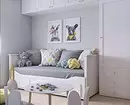
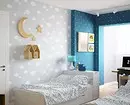
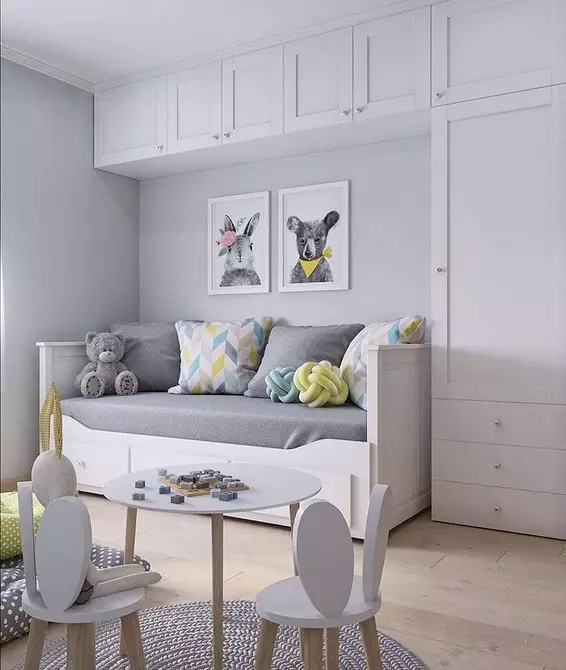
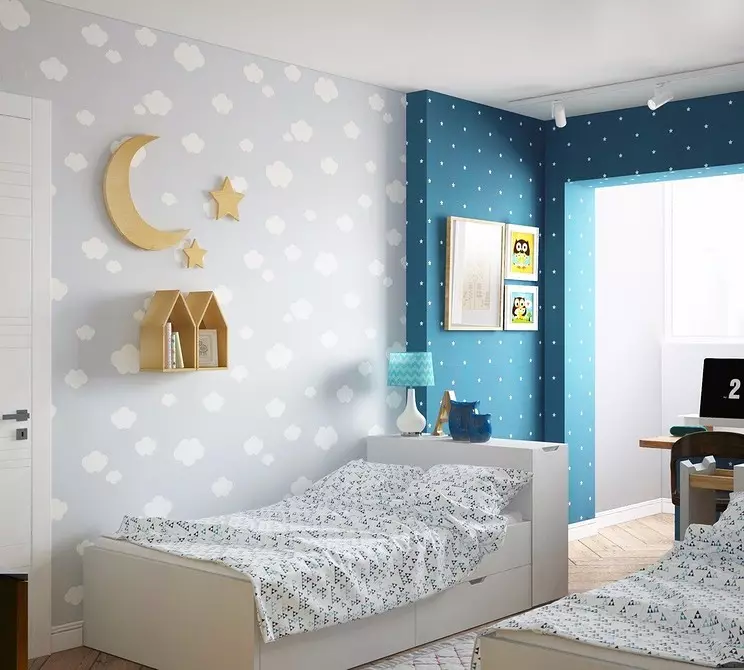
Pastel gamma is ideal for children. It refreshes the room, creates a good mood. You can paint all the walls in different colors. So, a bluish or greenish wall, which falls on the sun's rays, reduces the brightness of the color and causes a feeling of coolness. The wall in the shade is better to make peach or cream. And to stimulate the creative activity of the child, Japanese designers recommend hanging on the walls of children's drawings. It will give the room an individual style.
2. Find the right combinations
The harmonious two-color finish in the child's room can also be a good ideas in the design. The combination of sandy and light green dilute monotony and gives the interior a kind of originality and painting. No less gracefully look a gray pastel with orange elements or in contrast with gentle lilac. And the traditional combination of soft green with pink, like a second breath, revives the interior, filling it with life, energy and purity. Look for combinations!
3. Do not make room too bright
The word "children's" applies to completely different premises: for games, for classes, for sleep. Perhaps, not every person can single out a child several rooms - as a rule, children and sleep, and play in the same. Do not choose too bright colors for nursery and fill in many multi-colored toys, like children playing in entertainment centers. At home, such a design will lead to the fact that the child will be constantly excited, will be capricious, demanding from tired mothers with a dad of new entertainment, it will hardly be able to go to bed. Do not forget that the children's - first of all the bedroom. In gaming it turns bright toys that can be taken from the boxes, and then clean.
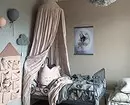
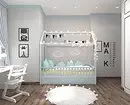
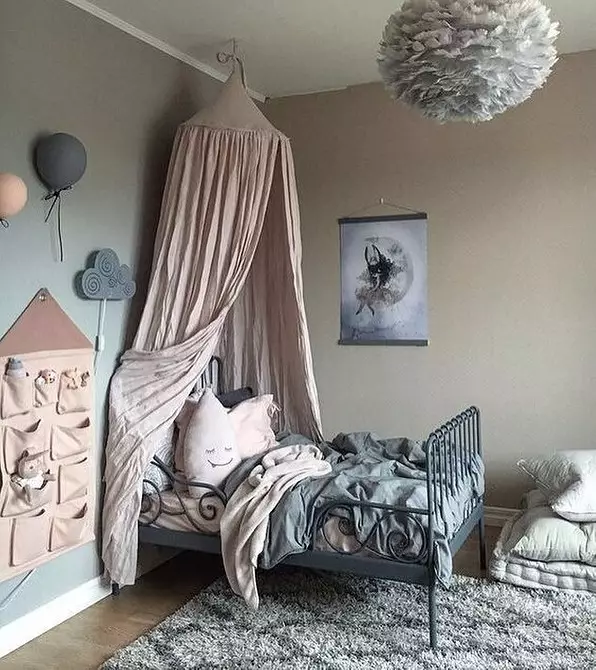
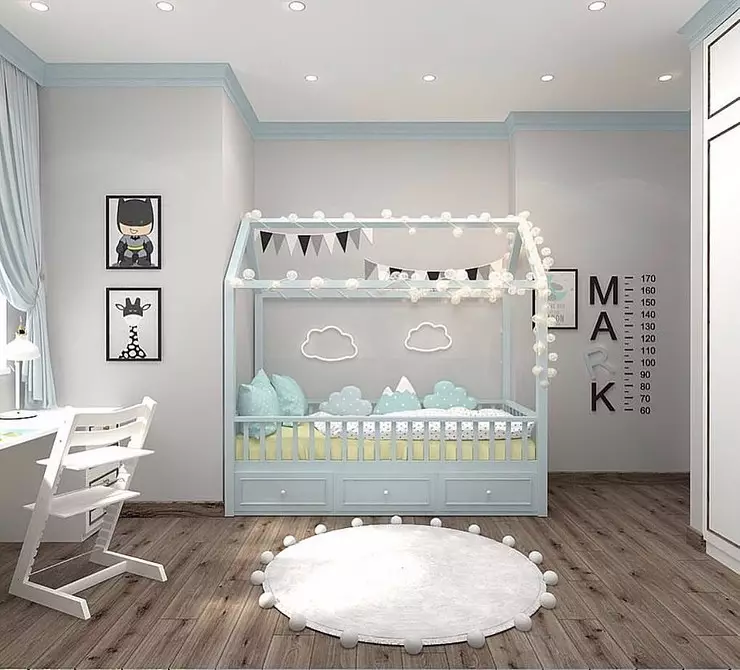
4. Consider the child's age
When making a nursery, it is necessary to take into account the age of the child. When he is less than 2 years old, the top role is played by the tastes of his mother, through which the child perceives the world. If you decorate the room so that mom will feel discomfort (let it even soothing blue or stimulating the development of yellow), then the son or daughter will be uncomfortable. For general development in children, it is useful to have toys of all major colors so that the baby can master their names.
The child for 3-7 years forms its idea of the world through the game. Therefore, the room must be arranged so that it can turn into a gaming space. When the baby wants to sleep, toys need to be removed into the boxes, cabinets. It is better to use a few shades in the preschooler's room: it helps to master the color standards and contributes to the emergence of various emotional states. Requires a place for self-expression - a corner for drawing on the wall or for design.
At the age of 7-12 years, leading activity is informative. The training room should not be covered with wallpaper with a bright detailed pattern, as they distract and interfere with focus.





